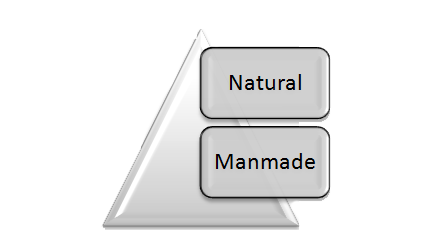 Protective Intelligenceis the art and science of understanding and further managing potential threats by collecting and assessing relevant information about adversaries who have the motivation, capability, and opportunity to mount attacks against a target. Looking at it from a predator’s viewpoint – you and anyone or anything of value or importance to you, are considered targets.
Protective Intelligenceis the art and science of understanding and further managing potential threats by collecting and assessing relevant information about adversaries who have the motivation, capability, and opportunity to mount attacks against a target. Looking at it from a predator’s viewpoint – you and anyone or anything of value or importance to you, are considered targets.
Experts useProtective Intelligenceto determine vulnerability of a target and guide interventions to avoid, mitigate, or defend against a threat.
The purpose of Protective Intelligenceis to help you identify and effectively manage real-world threats.
Once a threat is identified, an assessment of available information can be made (Assess). Decisions can be made (Plan) from that assessment, and then implemented (Act) according to that plan to monitor, intervene, or as appropriate, even to prevent a potential threat from progressing into an actual threat.
“Knowing as much as you can about a potential threat allows you to take productive actions to avoid that threat and / or mitigate the severity of its impact.”
The very first step in managing any threat is to find out everything you can about it.Just as the military studies an enemy’s offensive capabilities so that it may understand how to better defend against these threats, you can use Protective Intelligence to gain an understanding of what types of threats you may encounter, collect relevant information, and make educated decisions to protect yourself, your protectee(s)and your assets from damage, violence, disruption, or loss.
Current Threats
A critical component of any Protective Intelligence approach is to gain the best possible understanding of the current threats to which you, your family, or your assets may be exposed. We’ll start with the “what” and the “why” and then delve into the “how” later in this chapter.
What exactly is a “threat” and why should you be concerned?
The textbook Security and Loss Prevention defines a threat as “A serious, impending, or recurring event that can result in loss and should be dealt with immediately.”[1]
A classic dictionary definition of “threat” is
1. Expression of an intention to inflict pain, damage or punishment,
2. An indication of impending danger or harm,
3. An individual or group regarded as a possible or actual danger or menace.[2]
 Although definitions may be helpful, to assess and appropriately respond to a threat, it is necessary to understand the nature of that threat and why you should be concerned.
Although definitions may be helpful, to assess and appropriately respond to a threat, it is necessary to understand the nature of that threat and why you should be concerned.
Why should you be concerned? Because different types of events will have different consequences that may directly impact you, your family, and your assets, causing damage, violence, disruption, or loss.
Examples of such undesirable events include biochemical or chemical attacks; natural catastrophes such as tornadoes, hurricanes; manmade such as violence; vandalism; gunfire; homicides; computer crimes; carjacking; kidnapping; home invasion; sexual assault, and loss of property.[3]
As there is no shortage of bad things that can happen to good people, who or what can cause such undesirable events and where do they come from?
Threat Categories
American Risk Management[4]typically classifies threats into two general categories:
Natural and Manmade.
[1]Philip P. Purpura, Security and Loss Prevention 5th Edition (Burlington: Elsevier Butterworth-Heinemann, 2008).
[2]American Heritage® Dictionary of the English Language, 4th ed., s.v. “threat.”
[3] James P. MUUSS and David Rabern, The Complete Guide for CPP Exam Preparation (Auerbach Publications, 2006)
[4]Risk Managers are professionals in charge of assessing, minimizing, and preventing loss to a business.
Risk Management Threat Categories
Natural Threatscome straight from Mother Nature. They manifest themselves in the form of natural disasters such as an earthquake, flooding, landside,epidemic of infectious disease or from inclement weather such as hurricanes, blizzards,and the like. Where you live, the time of year and where you may be traveling at that time can all play a part in exposure to this threat category.
Manmade Threatsmay be multinational in origin and your adversaries may be
- Terrorist, extremist, militant, religious or activist groups
- Anti-US foreign nationals
- Sexual predators
- Street gangs
- Transnational organized syndicates
- Criminal opportunists
- Foreign intelligence services
- Disgruntled employees
- Corporate and industrial spies
- Emotionally unstable persons
Although not all of these threats may directly affect you, your family, or your business, it’s important to be aware of the possibilities, as you may face an unlimited number of potential threats, depending upon your daily activities. For example, if you travel internationally for work or vacation, then potential threats relating to international travel are obviously of a higher probability and of valid concern. However, if your schedule never puts you on an airplane, or you never leave the country, there’s a lower likelihood and no need for concern with regard to international travel.
Armed with an understanding of what a threat is, which types of threats are out there, why you should be concerned, and which threats are considered most plausible based on your lifestyle, prepares you to effectively manage and protect against them.
~ Steve Tarani
Professional Educator, Author, Keynote Speaker






